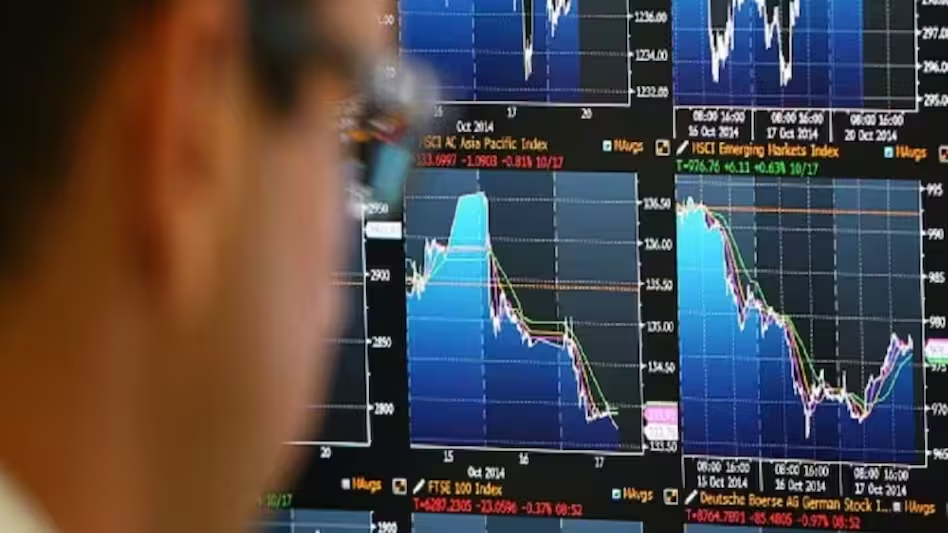After a turbulent quarter, Tata Motors shares show resilience. Is this the beginning of a sustained recovery, or is there more upside on the horizon? Let’s dive into the details.

In the ever-dynamic world of stock markets, where fortunes can change in the blink of an eye, Tata Motors Ltd has once again proven its resilience. After a sharp decline following its Q3 earnings report, the automaker’s shares have begun to claw their way back, offering a glimmer of hope to investors who weathered the storm.
On Friday, Tata Motors stock rose over 1% to ₹707.40 on the BSE, a welcome recovery from its previous close of ₹697. This uptick pushed the company’s market capitalization to ₹2.59 lakh crore, signaling a partial rebound from the earnings-induced sell-off. Just a day earlier, the stock had closed 7.37% lower, dipping below the ₹700 mark for the first time since November 28, 2023.
The Q3 earnings shock was primarily driven by weaker-than-expected performance from Jaguar Land Rover (JLR), the crown jewel of Tata Motors’ global portfolio. While the company’s domestic business showed steady growth, JLR’s struggles weighed heavily on investor sentiment, leading to a sharp correction in the stock price.
But as the dust settles, the question on every investor’s mind is: Is this recovery the start of a sustained rally, or just a temporary bounce?
What Went Wrong in Q3?
Tata Motors’ Q3 results fell short of market expectations, with JLR’s performance being the primary culprit. Despite strong demand for its luxury vehicles, supply chain challenges and higher costs dented profitability. Key highlights from the earnings report include:
- JLR’s Underperformance:
- JLR’s revenue growth was slower than anticipated due to semiconductor shortages and logistical bottlenecks.
- Higher input costs and inflationary pressures squeezed margins, impacting overall profitability.
- Domestic Business Shines:
- Tata Motors’ Indian operations delivered a strong performance, with robust sales in both commercial and passenger vehicle segments.
- The company’s focus on electric vehicles (EVs) continued to gain traction, with the EV portfolio contributing significantly to revenue growth.
- Consolidated Financials:
- Consolidated revenue grew by 22% year-on-year (YoY), but net profit missed estimates due to JLR’s weak margins.
- EBITDA margins contracted slightly, reflecting the challenges in the global luxury car market.
Why the Recovery ?
The early recovery in Tata Motors’ stock can be attributed to several factors:
The overall bullish sentiment in the Indian equity market, driven by strong macroeconomic indicators and foreign institutional investor (FII) inflows, has also supported Tata Motors’ recovery.
Bargain Hunting:
After the steep decline, value investors may have seen an opportunity to buy the dip, betting on the company’s long-term growth prospects.
Strong Domestic Performance:
The resilience of Tata Motors’ Indian operations has provided a cushion against JLR’s struggles. The company’s leadership in the EV segment and its strong commercial vehicle sales have kept investor confidence intact.
Optimism Around JLR’s Recovery:
Analysts believe that JLR’s issues are temporary and that the luxury carmaker is well-positioned to bounce back as supply chain pressures ease.
JLR’s order book remains strong, with high demand for its Range Rover and Defender models. The company’s plans to ramp up production and introduce new models could reignite growth in the coming quarters.
- Broader Market Sentiment:
- The overall bullish sentiment in the Indian equity market, driven by strong macroeconomic indicators and foreign institutional investor (FII) inflows, has also supported Tata Motors’ recovery.
What’s Next for Tata Motors?
While the road ahead may have a few bumps, Tata Motors’ long-term outlook remains promising. The company is at the forefront of India’s electric vehicle (EV) revolution, with a growing portfolio of EVs and a strong focus on sustainability. Additionally, JLR’s plans to ramp up production and introduce new models could reignite growth in the coming quarters.
For investors, the recent dip could be a golden opportunity to enter or add to their positions in a fundamentally strong stock. However, as with any investment, caution and due diligence are key.
While the road ahead may have a few bumps, Tata Motors’ long-term outlook remains promising. Here’s what investors should watch out for:
- JLR’s Turnaround:
- The luxury carmaker’s ability to address supply chain issues and improve margins will be critical to Tata Motors’ overall performance.
- JLR’s focus on electric and hybrid vehicles could open up new growth opportunities in the global luxury car market.
- EV Leadership in India:
- Tata Motors is a frontrunner in India’s EV revolution, with a dominant market share in the electric passenger vehicle segment.
- The company’s aggressive expansion of its EV portfolio and charging infrastructure could drive future growth.
- Commercial Vehicle Growth:
- The recovery in the commercial vehicle segment, driven by increased infrastructure spending and economic activity, bodes well for Tata Motors.
- Valuation and Investor Sentiment:
- Despite the recent correction, Tata Motors’ stock remains attractively valued compared to its peers.
- Positive commentary from management and improving operational metrics could further boost investor sentiment.
For investors, the recent dip could be a golden opportunity to enter or add to their positions in a fundamentally strong stock. However, as with any investment, caution and due diligence are key. Here’s a quick guide:
- Buy: If you believe in Tata Motors’ long-term growth story and its ability to overcome near-term challenges, the current price levels offer an attractive entry point.
- Hold: If you’re already invested, holding on to your position could pay off as the company’s fundamentals remain strong.
- Sell: If you’re risk-averse or concerned about JLR’s near-term performance, it might be prudent to book profits and wait for clearer signs of recovery.
What’s your take on Tata Motors’ recovery ? Do you see more upside ahead, or is the stock still in for a rough ride? Share your thoughts in the comments below and let’s discuss the future of this automotive giant.



